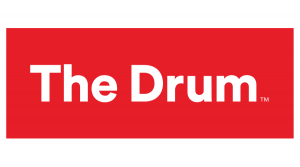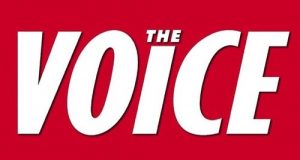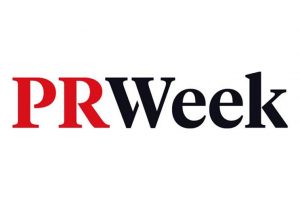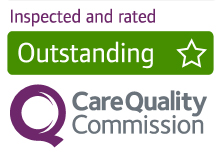Downloaded from www.mymenopausecentre.com
Direct URL: https://www.mymenopausecentre.com/faqs/
FAQs
Here are the answers to the questions we get asked most frequently.
Search our FAQs
Filter by category

Appointments
- Upon booking, you will receive an email confirmation with a link to start the video consultation.
- We recommend that you click on this and confirm that it’s all working a few minutes before the start of your consultation.
- After you have clicked the "Start video consultation" link you will be led to the My Menopause Centre screen, and you’ll be able to see your appointment details. You can mute your microphone, turn your camera on/off and also change the screen to full-screen mode using the toggles at the bottom of the call.
- You’ll then be joined by your doctor and a box will then appear with your video where you can see your doctor.
- If you are unable to join the video call, it may depend on the internet browser you are using.
- By email, from your doctor, where the results will be explained to you
- In some circumstances, you may need another appointment to discuss them
- Your blood pressure – you can check this with a calibrated home monitor, or visit your local pharmacy or GP practice
- Your height and weight – so we can calculate your Body Mass Index (BMI)
- A list of any HRT treatments you’ve already tried
- Your medical history*
- A brief family history of medical problems – particularly breast and ovarian cancer, heart disease, stroke, blood clots, and osteoporosis
- A full list of medication you are currently taking
- Your ID
- Passport
- Driving licence/Provisional driving licence
- UK Disabled Driver card
- Military ID card
- Police Warrant card
- A link to a pre-appointment questionnaire (for new patients only)
- A link to start the video consultation
- Symptoms of the perimenopause, menopause, and postmenopause
- Menopause as a result of surgery or cancer treatment
- Premature menopause (premature ovarian insufficiency - POI)
- Vaginal symptoms related to the menopause
- Menopause sexual dysfunction
Blood tests
- By email, from your doctor, where the results will be explained to you
- In some circumstances, you may need another appointment to discuss them
- During your appointment, you and your doctor discuss whether you’d prefer to self-administer, have a nurse come to your home or have the blood test taken at a location near you.
- After your consultation we will send you an email requesting payment and, once payment has been confirmed for the blood test, Medichecks will be in touch with you to make the necessary arrangements
HRT (Hormone Replacement Therapy)
Benefits
HRT is effective in treating the symptoms of the menopause – important when around 5% of women continue to experience symptoms of the menopause for 15 years and longer. In other words, well into their 60s. HRT is also beneficial in preventing osteoporosis and continuing the prevention of heart disease (if HRT was started early in the menopause.)- If HRT is started within 10 years of the menopause or before the age of 60, there is evidence that it reduces the risk of heart disease.
- If HRT is started after the age of 60 or after 10 years, the evidence we have suggests that there should not be a significant increase in the risk of heart disease.
- However, there is also evidence suggesting that starting older oral forms of HRT in older age may increase risks - particularly stroke. It's always best to discuss your case and your risk factors for heart disease with a doctor.
Risks
The main risks of using HRT to consider are the increase in the risk of breast cancer diagnosis and the increased risk of blood clots and stroke. The risk of breast cancer increases with age and with the length of time you take HRT. (Other breast cancer risk factors include your weight, your alcohol intake, and whether you smoke. Regular exercise can reduce the risk). If you have had a hysterectomy, you only need oestrogen-only HRT. This is associated with a lower risk of breast cancer than combined HRT containing oestrogen and progestogen, though the risk of breast cancer is also likely to increase with time if you take oestrogen-only HRT. If you have a womb, you need to take a progestogen to reduce your risk of cancer of the womb. If you need to take a progestogen, taking Utrogestan™ with oestradiol, or taking Femoston™ oral HRT (which contains oestradiol and dydrogesterone) are likely to have a lower risk of breast cancer than synthetic alternative forms of HRT containing norethisterone. Utrogestan™, Femoston™, and the Mirena™ have never gone head-to-head in trials. The amount of progestogen released into the body from the Mirena™ is low but not zero. The risk of blood clots – for example, in the leg (deep vein thrombosis), lungs (pulmonary embolism), or brain (stroke) - increases with age. HRT tablets increase the risk further. Having the oestradiol through the skin in the form of a patch, gel or spray will not further increase the risk. If you need to take a progestogen, Utrogestan™ and the Mirena™ should not significantly affect the risk of blood clotting. Older synthetic progestogens – such as norethisterone – do. So, heading into your 60s, it's safer to switch to transdermal oestradiol plus Utrogestan™ or the Mirena™. Studies have suggested that the risk of ovarian cancer diagnosis increases by a small amount, year on year, though there is no evidence that HRT actually causes this [Beral V, Million Women Study C, Bull D, Green J, Reeves G. Ovarian cancer and hormone replacement therapy in the Million Women Study. Lancet. (2007) 369:1703–10.]- Your age
- Your weight
- Whether you smoke
- How much alcohol you drink
- Other existing medical conditions
- Your family history.
- If HRT is started within ten years of the menopause or before the age of 60, HRT can help prevent cardiovascular disease and reduce the risk of dying from cardiovascular disease. So, even if you have risk factors for cardiovascular disease like high blood pressure or high cholesterol, it doesn’t mean that you can’t take HRT.
- If you start HRT more than ten years after the menopause – HRT may not prevent heart disease, but there is no evidence of an increase in cardiovascular illnesses, such as heart attacks or strokes.
- combined HRT contains oestrogen and a progestogen. This can be sequential or continuous.
- oestrogen-only HRT.
1. Combined HRT
- Sequential HRT – Oestrogen is taken every day, and the progestogen is taken for (usually) half of the month. HRT taken this way results in a monthly bleed.
- Continuous combined HRT – So-called because the two hormones (oestrogen and progestogen) are taken together, daily. This approach results in no bleeding.
2. Oestrogen-only HRT
- Oestrogen-only HRT – Most women who have had a hysterectomy don’t need the progestogen and will take what is known as oestrogen-only HRT.
Sequential HRT
If it’s less than 6-12 months since your last period, you’ll need to take sequential HRT. This means you’ll continue to have a (usually) monthly bleed. Most women take this type of HRT for around four years or until they reach 55 (whichever comes first). By 55, most women’s periods have stopped. Sequential HRT contains oestrogen and progestogen. You take oestrogen every single day, and the progestogen is taken with this for half of the month. This causes a withdrawal bleed rather like a period. Confusingly, medical professionals don’t refer to it as a period since the bleeding is a direct result of the hormones you’re taking. If you would prefer not to have a monthly bleed and it’s less than 6-12 months since your last period, you could opt to have a Mirena™ intrauterine system (coil) fitted and use this to protect the lining of the womb, alongside oestrogen. This contains a progestogen. Most women experience no or minimal bleeding with a Mirena™, which lasts for five years. It also provides contraception and is a great option if you’re experiencing heavy periods.Continuous Combined HRT
If it’s around 12 months since your last period, you can start continuous combined HRT – with no bleed. With this version of HRT, you take oestrogen and a progestogen every day. However, if you begin this treatment too early in the menopause transition while still having periods, you may have irregular, frequent bleeding. A Mirena™ intrauterine system is also a good option here to protect the womb’s lining alongside oestrogen and to provide contraception if needed.Oestrogen-only HRT
This HRT contains just oestrogen. You can take it if you have had a hysterectomy (you’ve had your womb removed). There are exceptions to this rule, though. Women who have had a hysterectomy for endometriosis may be advised to take a continuous combined HRT by their gynaecologist. If you have had a subtotal hysterectomy where the womb is removed, but the cervix is left behind, you may need to take combined HRT as some of the womb lining may remain. Again, you should be guided by your gynaecologist. If you have had an endometrial ablation procedure where the womb lining is removed – usually for heavy bleeding – you would still need to take combined HRT (oestrogen and progestogen).- Oestrogens (for example, oestradiol)
- Progestogens (for example, progesterone)
- Androgens (for example, testosterone)
- Every woman has a different background risk of breast cancer before HRT is added into the equation. The lifetime risk of breast cancer is one in eight women.
- Women worry most about dying from breast cancer, but in fact, far more women die of heart disease. This in no way diminishes the importance of breast cancer, but it highlights how important it is to be aware of heart disease.
Oestrogen-only HRT
Studies show that after five years, there is little or no increase in the risk of breast cancer diagnosis in women who take oestrogen-only HRT. There is likely a very small increase in the risk of breast cancer year on year if you take oestrogen-only HRT.Combined HRT
There’s a very small increase in the risk of being diagnosed with breast cancer if you take combined HRT (oestrogen and progestogen), but this doesn’t mean there is an increased risk of dying from breast cancer.Sequential HRT
Sequential HRT is not quite as effective in protecting the womb as continuous combined HRT. This is why after four years, or when you reach 55 years of age (the age at which most women’s periods have stopped), your therapy should be switched to continuous combined HRT.- Hot flushes and night sweats
- Low mood and anxiety
- Brain fog and memory issues
- Vaginal dryness
- Painful sex
- Loss of libido/sex drive
- Bladder issues
- Skin, tissue, and joint quality
- Joint and muscle aches and pains
- Cardiovascular disease
- Osteoporosis
- Loss of cognitive function
Other services
Our team
Prescriptions
- For most HRT, we will email your prescription to our pharmacy partner immediately after your consultation.
- The pharmacy will then get in touch with you by text or telephone by the next working day to confirm the details.
- Once payment has been received, they will courier your medication directly to you, wherever you. All medication has to be signed for by an adult.
Pricing
There are no FAQs that match those search terms.
Learn more
Join the pause. community
We’ve created pause. as a space for women to come together and share stories about their menopause experience, ask questions, and to find support and inspiration. We'll also share the latest news and updates on the menopause from our experts.
Want to be the first to hear our latest news? Join our pause. community today.
Share your email to receive the latest news, updates and information on new products and treatments from My Menopause Centre and our pause. community. You can unsubscribe at any time.
We're committed to protecting and respecting your privacy - see our Privacy Policy and Terms and Conditions

Book a consultation
Whether you want to discuss your symptoms, create a treatment plan that's right for you, understand some test results or have a check-up, the highly experienced doctors and nurses in our menopause clinic are here to help you.
Book nowContact My Menopause Centre
- General enquiries: hello@mymenopausecentre.com
- Book appointments online: Log into your account and go to 'My appointments'
- Book appointments by phone: 0333 444 1067
- Website: https://www.mymenopausecentre.com


















